SEO success hinges on the keywords you choose. So how do you pick the right ones? Many marketers use search volume as a criterion for assessing whether a keyword is a good bet. The idea is that a keyword many people are searching for — in other words, one that has a high search volume — is popular and, therefore worth targeting.
However, there’s a downside to choosing keywords with a high search volume. Their popularity means that there’s likely more competition for them, so you’ll be battling it out with other brands who are targeting the same keywords.
Because of this, choosing a keyword that has a decent search volume but isn’t overly competitive is something of a balancing act.
What Is Search Volume?
Keyword search volume quantifies how many people search for a given keyword each month. The number tells you how popular the keyword is — for example, a keyword with a search volume of 10,000 is far more popular than a keyword with a search volume of 50.
How Is Search Volume Calculated?
Most SEO tools use clickstream data to build a sample population and then use that sample to extrapolate a wider audience. Clickstream data is gathered by tracking and analyzing the number of visits to a website and where those visits have come from.
Bear in mind that even the best SEO tools are working with estimates and may return inaccurate results. This is why different tools might report different search volumes for the same keyword — especially for up-and-coming keywords in new or emerging industries that have little search volume data to pull from.
Each keyword has a unique search volume. Even two very closely related keywords may have different search volumes.
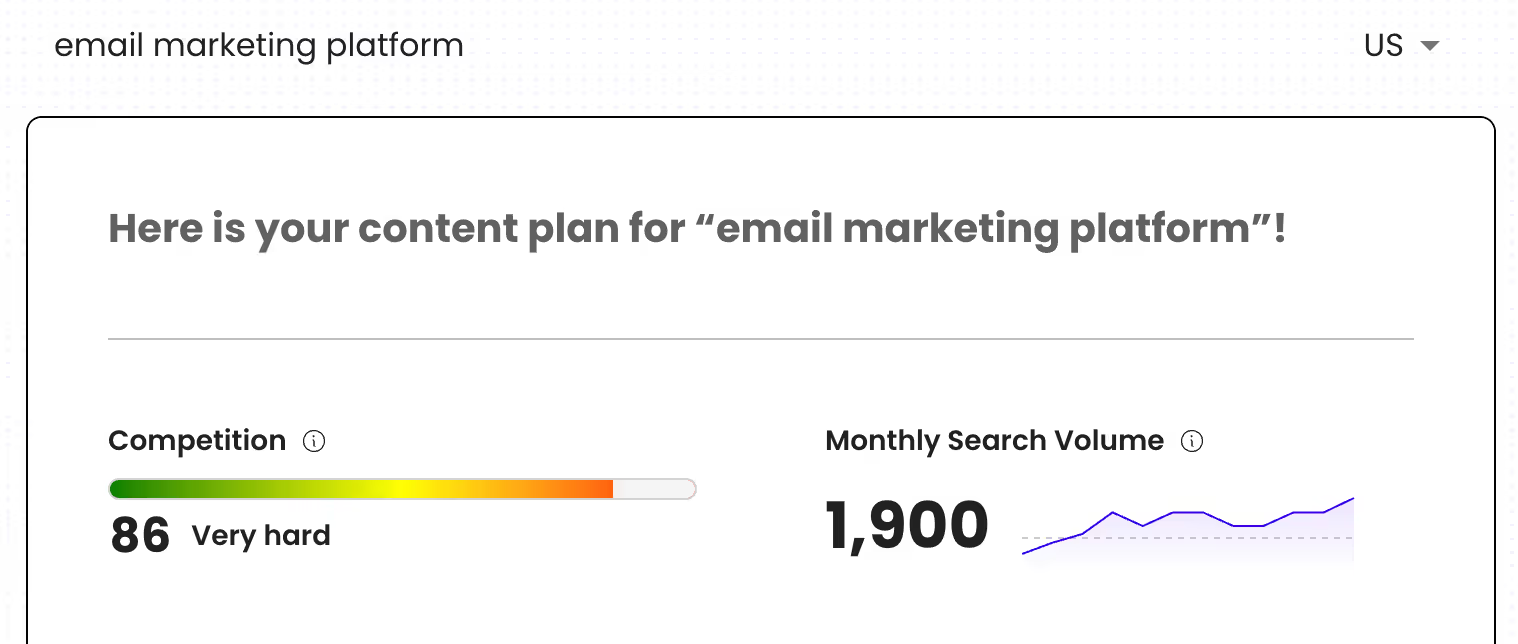
For example, the keyword “email marketing platform” has a monthly search volume of 1,900, whereas the very similar “email marketing tool” has a search volume of 880.

Broader keywords — or head terms — typically have higher search volumes than long-tail keywords. But this doesn’t mean you should target only broader keywords. Those long-tail keywords with lower search volumes are often used by people who are more likely to convert because they know what they want.
For example, the keyword “best email marketing tool for small business” has a low search volume of 20, but the people searching it might be ready to invest.
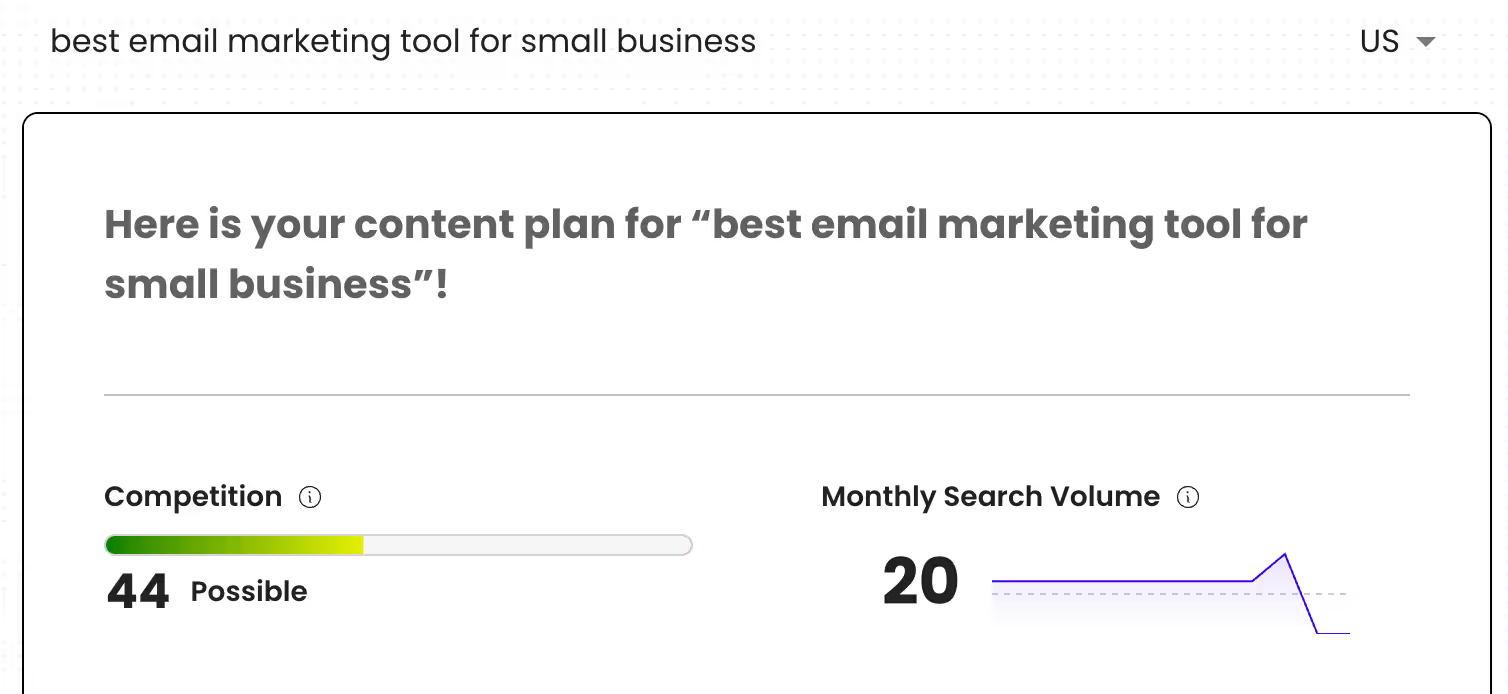
What Is a Good Keyword Search Volume?
Ultimately, a “good” keyword search volume depends on a couple of factors, including how important the keyword is to your business and how relevant the keyword’s search intent is.
.avif)
There are four common types of search intent:
- Informational: for example, “how to write a book” or “chicken curry recipe.”
- Navigational: for example, “LinkedIn login” or “Cincinnati mayor’s office contact.”
- Commercial: for example, “non-stick frying pan” or “red ballet shoes.”
- Transactional: for example, “buy writing course” or “event planner near me.”
Transactional and commercial searches have higher intent because the people using those types of keywords are more likely to be ready to buy.
The keyword “buy writing course” might have a search volume of only around 20, but it could be that 15 of those 20 people will go on to purchase from you. On the other hand, an informational keyword like “how to write a book” might get 22,000 searches a month, but those searchers aren’t looking to buy anything.
Many companies will target keywords only if they fall within certain parameters — for example, a minimum of 100 searches per month — but there may be cases where it makes sense to create a piece of content that targets a keyword with a low search volume.
These keywords might include:
- Transactional keywords that are highly relevant to your product.
- Keywords that include your brand or product name.
- Opportunities to introduce yourself to your competitors’ customers.
Cluster Low-Volume Keywords
During your keyword research, you might find that you have several related low-volume keywords. You can cluster these keywords and create one post targeting all of them rather than creating individual posts for each of them. But doing this makes sense only if the search intent is the same for each keyword.
For example, someone searching for “how to start an email list” is not looking for the same thing as someone searching for “Mailchimp prices.” While it might be easy to write an article that targets both keywords because they focus on a similar topic, they target two types of users — someone looking for information and someone looking to buy.
Search Volume Versus Search Difficulty
Search volume and search difficulty often go hand-in-hand, but they describe two different keyword characteristics. While search volume indicates how many searches a keyword gets each month, search difficulty indicates how much competition there is for a keyword.
Keywords with a high search difficulty have a lot of competition. This means it’ll be harder to rank high in the search results. Keywords with a lower difficulty score are easier to rank for because they have less competition (basically, fewer brands have tried to target them). Difficulty scores range from one to 100, with one being incredibly easy (no competition) and 100 being almost impossible to compete for. Anything over 50-60 is considered difficult.
Choosing the right keywords is about finding the balance between search volume and search difficulty.
For example, the keyword “New York” gets 673,000 searches a month and has a nearly impossible (or very hard) search difficulty score of 100.
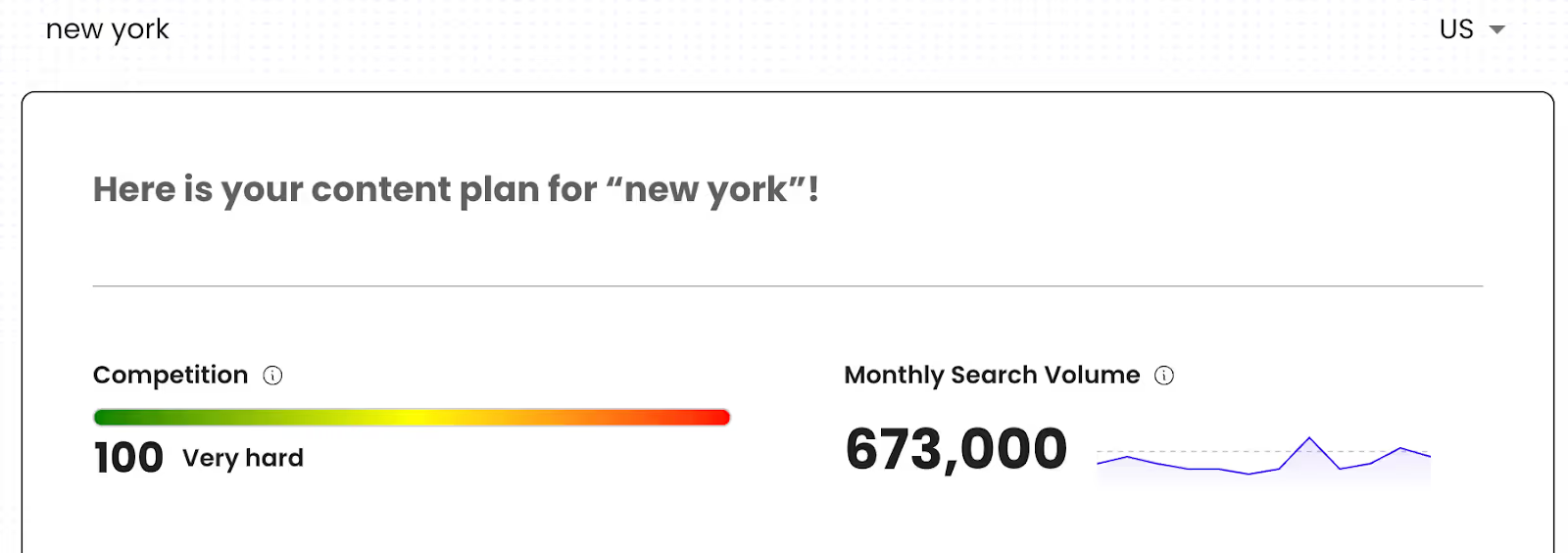
A more focused keyword, like “vegan bakery New York” has a search volume of 210 and a low search difficulty score, making it a good keyword to target.
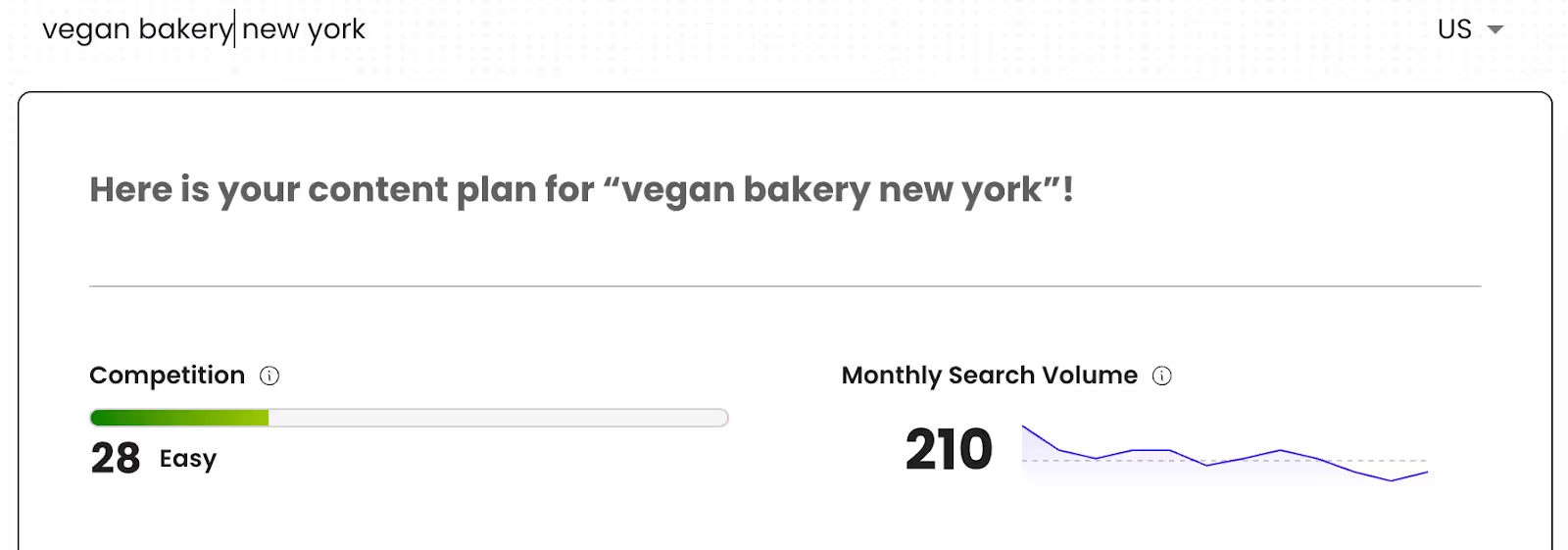
Don’t look solely at the search volume; also look at the search difficulty to find keywords that have a decent number of searches each month but that aren’t fiercely competitive.
5 Tools for Finding Keyword Search Volumes
1. Positional
Positional has a suite of tools that can help you build robust SEO strategies. The toolset provides a couple of different ways to determine search volume:
Content Planner
Positional’s Content Planner provides a snapshot of individual keywords, complete with their monthly search volume, their search difficulty (or competition), and a suggested outline for a piece of content targeting that keyword.
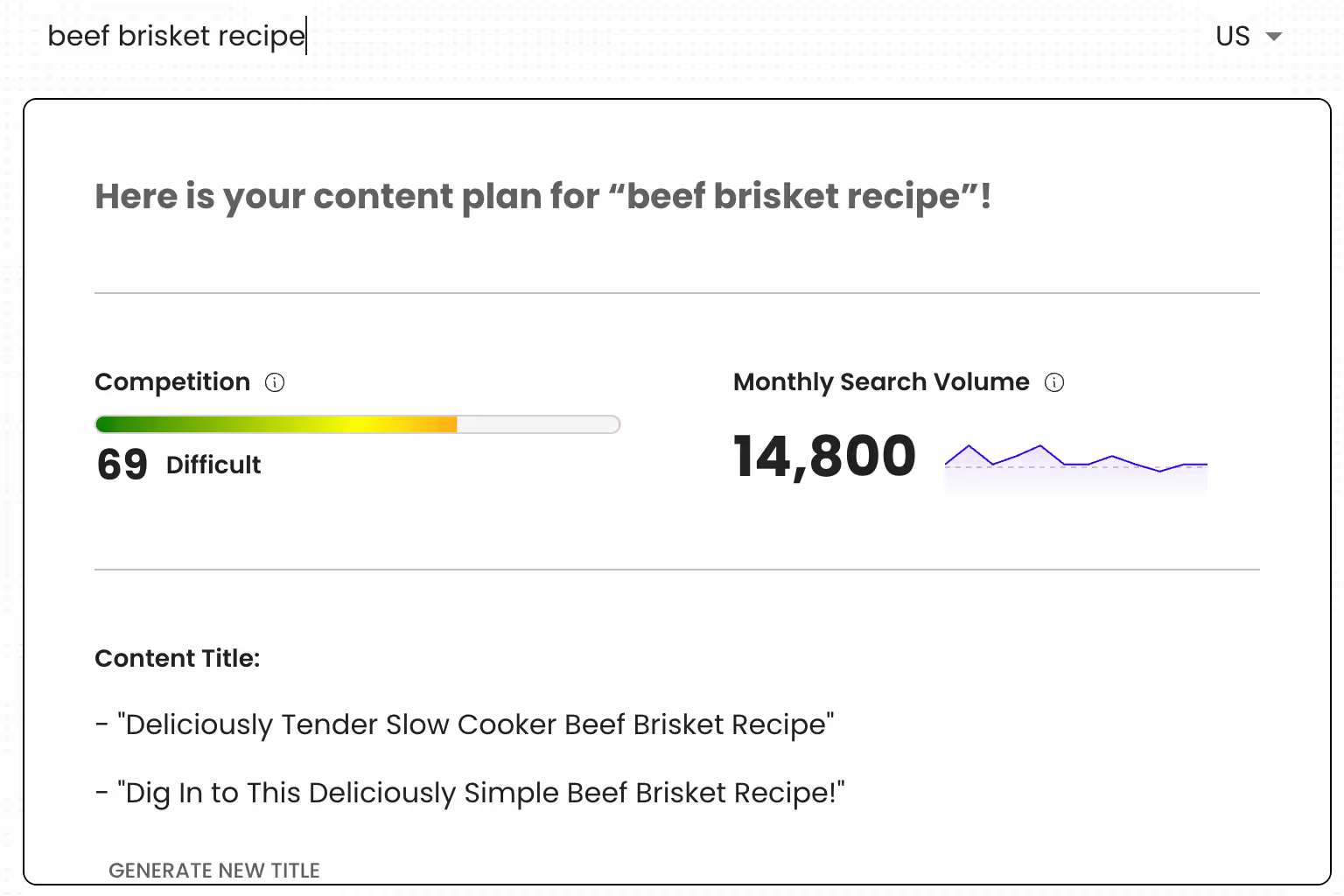
Competitor Research
The Competitor Research tool lets you compare multiple brands against one another to find keywords that are common across your competitors’ sites. You can get an overview of the most popular keywords, along with their search volume and difficulty score.
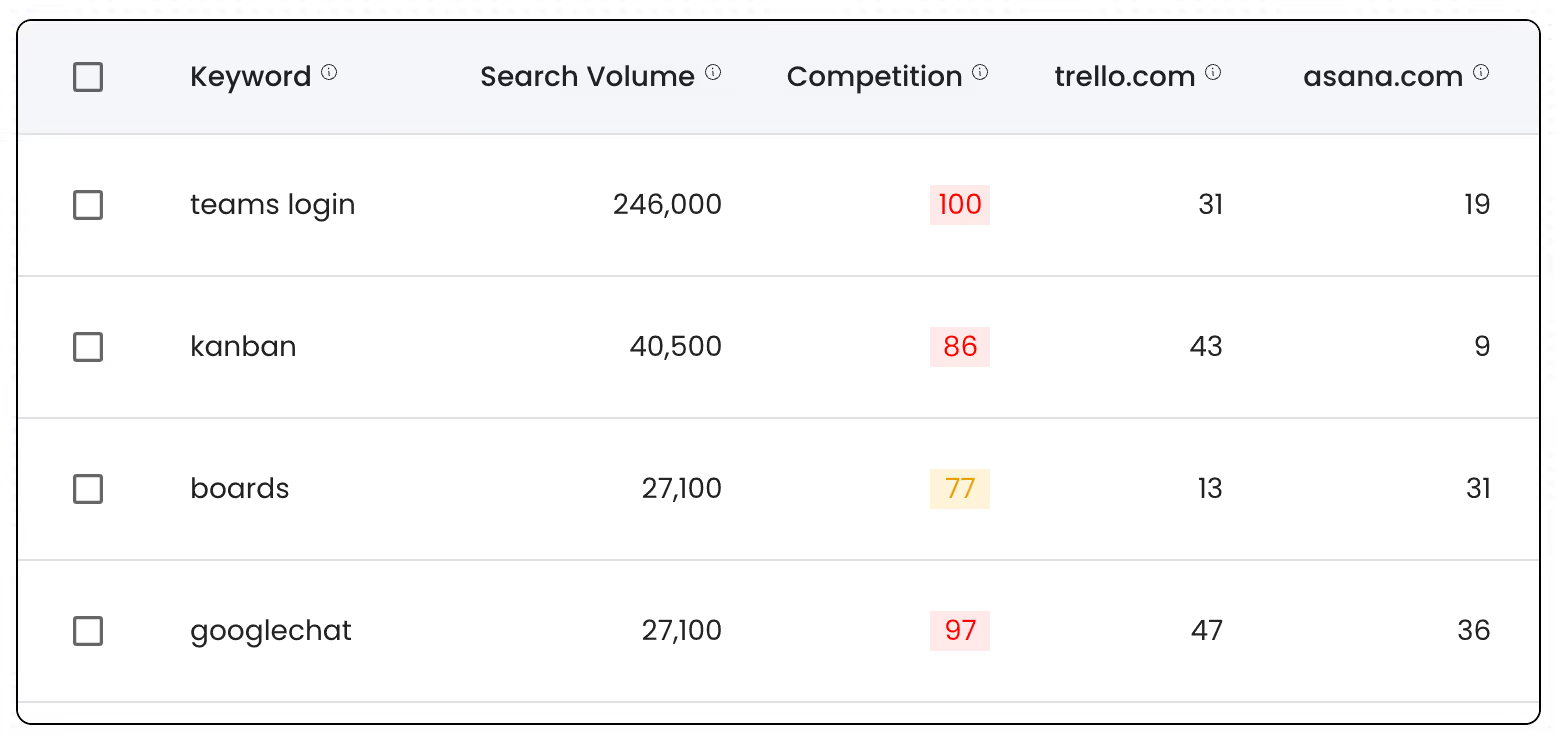
Keyword Tracking
The Keyword Tracking feature tracks the keywords on your website (or a competitor’s) and shows data like the monthly search volume, the difficulty score, and any changes in position.
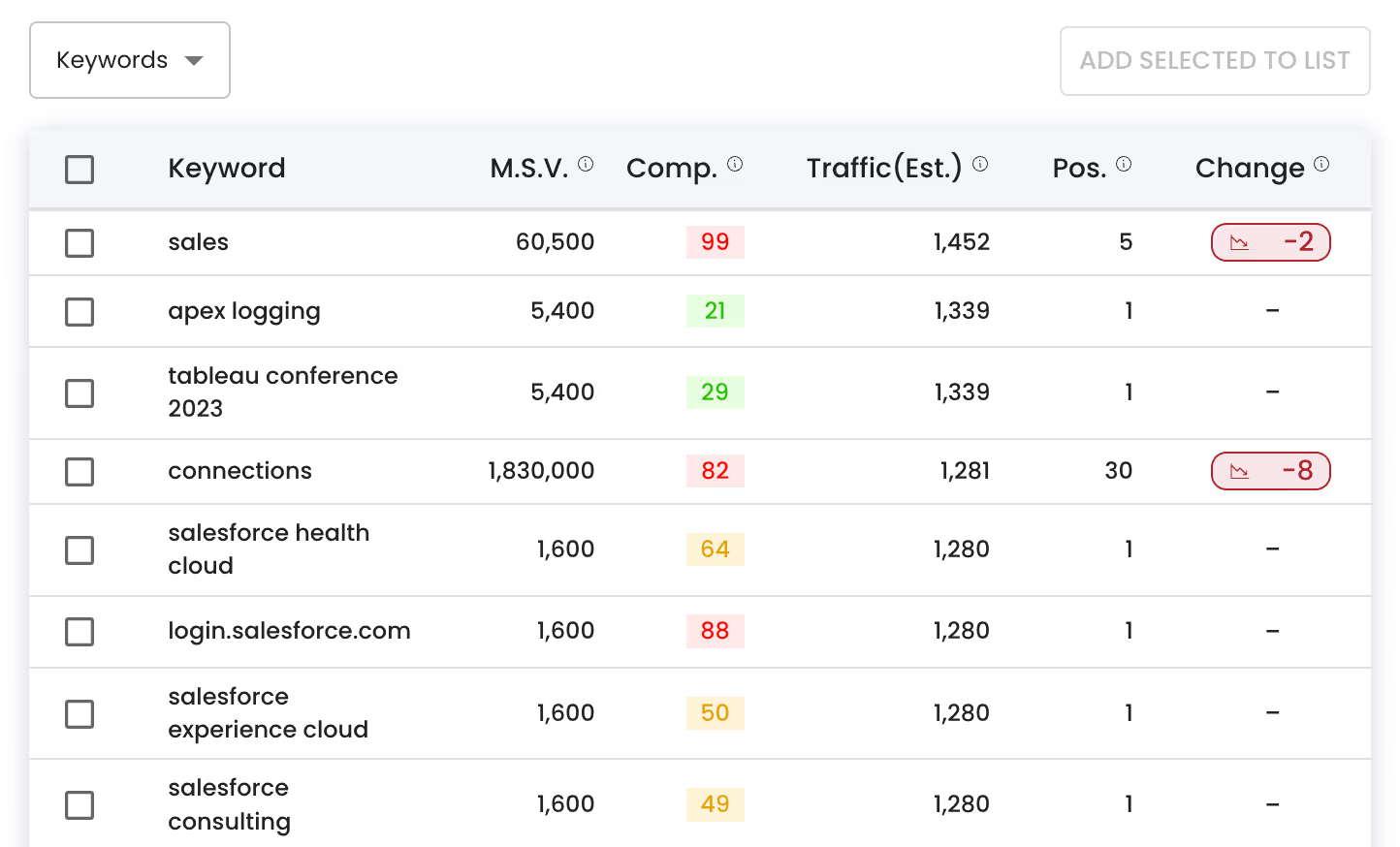
2. Semrush
Semrush’s Keyword Overview feature provides detailed information about any keyword, including its monthly search volume, difficulty score, and search intent.

3. Ahrefs
Like Semrush, Ahrefs offers insight into each keyword with its Keyword Explorer feature. This information includes a keyword’s search volume, difficulty score, and traffic potential. A bonus Ahrefs adds here is its estimate for how many backlinks you’ll need to generate to rank in the top ten for each keyword.
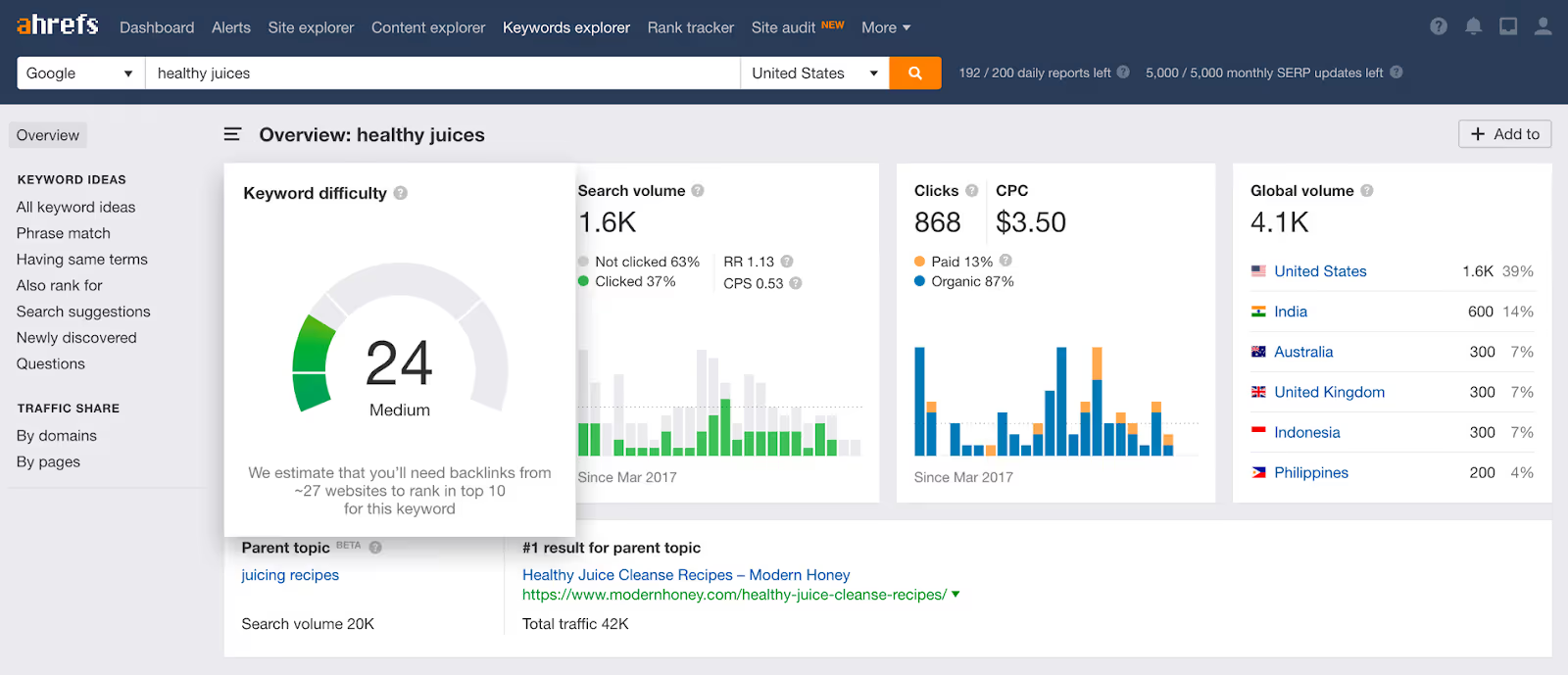
4. Google Keyword Planner
Google Keyword Planner targets ad-based keywords. It estimates the monthly search volume for keywords, as well as how much it’ll cost to target them with a paid campaign. The data might be slightly different from clickstream data, but the keyword research tool is free to use. You’ll likely want to use an SEO tool alongside Google’s Keyword Planner to get more insight into your keywords and a full content plan.

5. Google Trends
Google Trends isn’t a keyword tool per se, but it can tell you a lot about a keyword or a topic. Unfortunately, it won’t provide specific search volumes for keywords. However, it does provide helpful trend data that can be used alongside data from other SEO tools. For example, it can show you a visual graph of search activity over time and whether searches peak at certain times of the year.

Final Thoughts
Search volume is a good indicator of potential traffic.
Keywords with lots of monthly searches are likely to be popular, but that popularity comes with the challenge of fiercer competition. Use an SEO tool to find keywords that have a good amount of monthly searches and low or medium difficulty scores. These keywords will be the easiest to target, and you’ll likely start seeing results quickly. However, don’t completely write off keywords with fewer searches each month if they’re highly relevant to your brand or have a very transactional intent.





